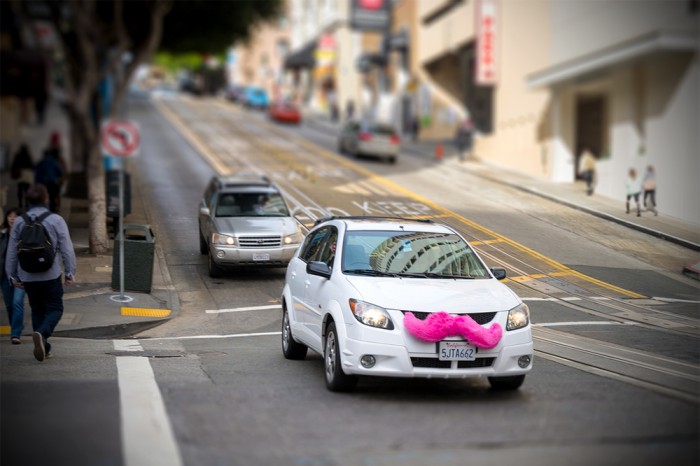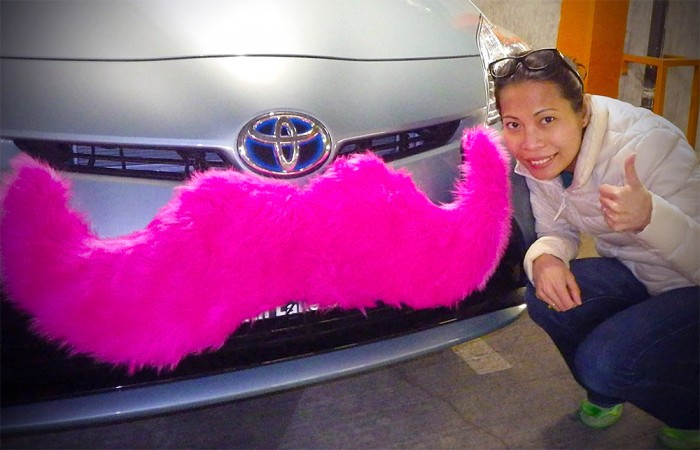
When I tell people in Seattle that I’m driving Lyft, they automatically ask, “A fork lift?”
Mind you, I’m a little Asian lady so you can see the surprising image someone might have in their mind. I don’t know why it’s surprising–I could drive a forklift if I wanted to. But no, not a forklift. The rideshare Lyft.
On Monday, Seattle became the first city in the country to cap the number of rideshare drivers on the road to 150 for each company.
In an email sent out to drivers, Lyft said “these rules would severely limit your freedom to drive” and that they will be continuing to fight for a veto from Mayor Ed Murray in the coming week.
Despite the uncertainty of Lyft’s future, I decided to become a driver when I moved to Seattle. I’d used the service as a passenger in San Francisco, where Lyft is even more popular than in Seattle, and had had nothing short of great experiences.
As a passenger I felt safe, comfortable and frankly, cool, because I was supporting something uniquely forward-thinking that fulfills a need. Rideshare companies like UberX, Sidecar and others provide a service that’s simply cheaper and more reliable than traditional taxis.
And what better way for a newcomer to connect with people and learn my way around this awesome city than as a rideshare driver? Not to mention the benefits of quickly earning some cash. Yes, I know I sound like an ad right now…
So I got myself a Washington State Driver License, signed up to be a driver and went through all the steps: interview, driving test with a mentor, background checks and then a few weeks later, got my welcome kit!
I was super excited. I couldn’t wait to get my pink-stache on my car!
I was also–wait for it–freaking nervous! The pressure was on to make my Lyfts good rides because 1) the passengers would rate me, determining whether or not I would get more rides, 2) I didn’t want to get into an accident with them in the car (or at all!) and 3) I was a little worried about my safety. In truth, the passenger is still a stranger, even though I have their information from Facebook.
I got to thinking, now that I’m on the driver side of Lyft, what did I really get myself into?
On my first day driving a couple of weeks ago, I got in my car and started my shift. And then I waited. No rides… still waiting… still no rides.
One hour and 10 minutes later: Ah, got one! MY VERY FIRST RIDE! It was a short ride, but I was no longer a rideshare driver virgin, thanks to Tina.
So another hour goes by… no ride. Then, my phone goes, “Pring!” A second ride shows up and there goes the day. Basically, I did four rides in four hours. Meh, not very lucrative.
This really does test your patience. And all that driving? It’s actually pretty exhausting. I also found that when I drove around, I was more likely to get more passengers, but if I stayed in one spot, I just didn’t get any “Prings.”

Most Lyft drivers that I’ve talked to love it–but it takes some time. As a driver, it’s a relationship that you have to nurture. Building up good ratings is all-important.
Lyft is a great idea and a great service. Like anything new, there are bound to be speedbumps along the way, and even conflicts. I’m willing to give it a try and take the risk, and I think Seattle should too.
While the cab drivers are concerned about losing customers, maybe this is a chance for that industry to look at how to improve their services. Maybe there’s a way to compromise between the cab drivers and rideshare companies—and maybe there is even a way to collaborate.
The point of rideshare companies is not to ostracize anyone–it’s a way to connect, improve our world, increase opportunities and decrease disparities. A model like this can be scary because it’s a testament to change, advances in technology and it works through trial and error.
Nothing is permanent because we are always looking for something better. It is human nature to evolve. Citizens of some nations are luckier than others to get the chance to evolve. I know, I was born in Burma.
If I’d stayed there I would never have had this opportunity so freely–to have a democracy to allow me to make choices, to try, to fail and try again, to improve and succeed.
My lesson from Lyft, by both being a passenger and a driver, is that democracy and capitalism that working creatively together builds insight for us all to have a better future.
I only made $22 on my first day as a Lyft driver, but by my third shift I was averaging $20/hour.
And I also got a great consolation prize: the people were cool, friendly and genuinely believe in this community. My fears of strangers and my safety went halfway out the window.
Will I do it again? Yeah, I’ll give it another try.

